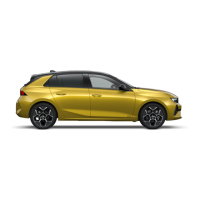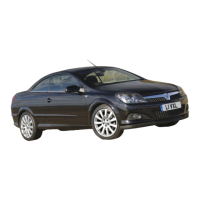
Do you have a question about the Vauxhall Adam and is the answer not in the manual?
| Brand | Vauxhall |
|---|---|
| Model | Adam |
| Category | Automobile |
| Language | English |
User enters vehicle data for easy access to service and technical information.
Explains how to navigate and understand the manual's structure, content, and symbols.
Defines symbols for safety alerts (Danger, Warning, Caution) and their importance.
Basic operations for unlocking vehicle, seat and mirror adjustments, and steering wheel.
Details on seat adjustment, head restraints, seat belts, mirrors, and instrument panel overview.
Operation of exterior lights, switches, hazard flashers, and washer/wiper systems.
Information on keys, locks, their functions, and the vehicle's Car Pass.
Operation of central locking, anti-theft alarm, and immobiliser systems.
How to open and close doors, tailgate, and operate power windows.
Operation of the sunroof and adjustment of interior/exterior mirrors.
Proper positioning and adjustment of head restraints and seats for comfort and safety.
Proper use of seat belts, reminder system, force limiters, and airbag system information.
Procedures for deactivating the front passenger airbag for child restraint safety.
Recommendations and installation locations for child restraint systems.
Glovebox, cupholders, and front storage locations with safety warnings.
Using the rear carrier for bicycles and managing the load compartment.
Details on the closable rear storage box and access via floor covers.
Lashing eyes, warning triangle, first aid kit, roof racks, and loading info.
Adjusting steering wheel, controls, heated wheel, and windscreen wiper/washer operation.
Operation of light switch, auto control, high beam, and indicator lights.
Heating, ventilation, AC, and window demisting functions.
Instrument cluster, warning lights, and Driver Information Centre displays.
Customizing vehicle settings and using the OnStar service.
Operation of light switch, auto control, high beam, and tail lights.
Adjusting headlight range for vehicle load and using daytime running lights.
Operation of turn signals, parking lights, and reversing lights.
Instrument panel illumination, interior lights, and lighting features like entry/exit.
Heating, ventilation, AC, and electronic climate control systems.
Adjusting air vents and maintaining air intake/pollen filter.
Procedures for clearing windows and operating the cooling system.
Customizing climate control settings via the Info-Display.
General driving advice and procedures for starting the vehicle.
How the stop-start system works and safe parking procedures.
Operation of manual transmission and the vehicle's brake system.
TC, ESC, City mode, cruise control, speed limiter, and parking assist systems.
Recommendations for accessories, modifications, and vehicle storage.
Performing checks, engine oil, coolant, and washer fluid levels.
Tyre condition, designations, winter tyres, pressure adjustment, and monitoring.
Tyre repair kit, wheel changing, spare wheel, jump starting, and towing.
Guidelines for exterior and interior cleaning and care.
Importance of service, intervals, and using the service display.
Engine oil, coolant, and brake fluid specifications and recommendations.
Details on Vehicle Identification Number and location of the identification plate.
Fluids, lubricants, engine data, performance, weight, dimensions, capacities, tyre pressures.
Detailed specifications for different engine variants, including power and torque.
Tyre pressure recommendations for different loads, conditions, and tyre types.
Statements on product compliance with directives and technical standards.
Paint thickness for repairs and notices for included software.
Details on event data recorders, data storage, and privacy policies.
Explanation of RFID technology usage in vehicles for various functions.











